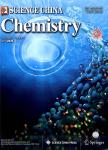Chiral AuCu heterostructures with site-specific geometric control and tailored plasmonic chirality
作者机构:College of Chemistry and Molecular SciencesWuhan UniversityWuhan 430072China
出 版 物:《Science China Chemistry》 (中国科学(化学英文版))
年 卷 期:2023年第66卷第11期
页 面:3280-3289页
核心收录:
学科分类:081704[工学-应用化学] 07[理学] 0806[工学-冶金工程] 070205[理学-凝聚态物理] 08[工学] 070304[理学-物理化学(含∶化学物理)] 0817[工学-化学工程与技术] 080501[工学-材料物理与化学] 0805[工学-材料科学与工程(可授工学、理学学位)] 0703[理学-化学] 0702[理学-物理学]
基 金:supported by the National Natural Science Foundation of China (22174104 to Q.Z.) the support of the Hubei Provincial Natural Science Foundation of China (2022CFB627) the Fundamental Research Funds for the Central Universities (20422022kf1039)
主 题:chiral nanomaterials AuCu heterostructures site-selective growth plasmonic chirality galvanic replacement reaction
摘 要:Rational design and construction of chiral-achiral hybrid structures are of great importance to realize the multifunctional complex chiral structures toward emerging technological applications. However, significant challenges remain due to the lack of fine control over the heterostructure. Here, we have developed a general bottom-up synthetic strategy for the site-selective growth of Cu nanodomains on intrinsically chiral Au nanocrystals. Chiral AuCu heterostructures with three distinct architectures were achieved by controlling the overgrowth of Cu nanodomains in a site-specific manner. The geometry-dependent plasmonic chirality of the heterostructures was demonstrated experimentally by circular dichroism spectroscopy and theoretically through finite-difference time-domain simulations. The site-specific geometric control of chiral AuCu heterostructures was also extended to employ anisotropic chiral Au nanoplates and nanorods as the building blocks. By virtue of the galvanic replacement reactions between metal ions and Cu atoms, chiral heterostructures with increasing architectural complexity and compositional diversity can be further achieved. The current work not only opens up a promising strategy to synthesize complex chiral hybrid nanostructures but also provides an important knowledge framework that guides the rational design of multifunctional chiral hybrid nanostructures toward chiroptical applications.



